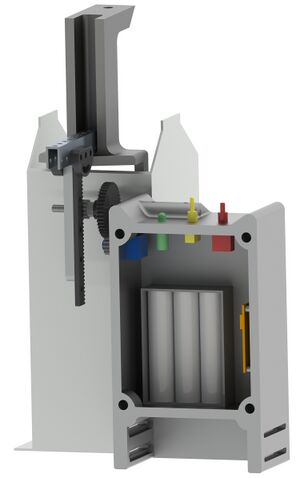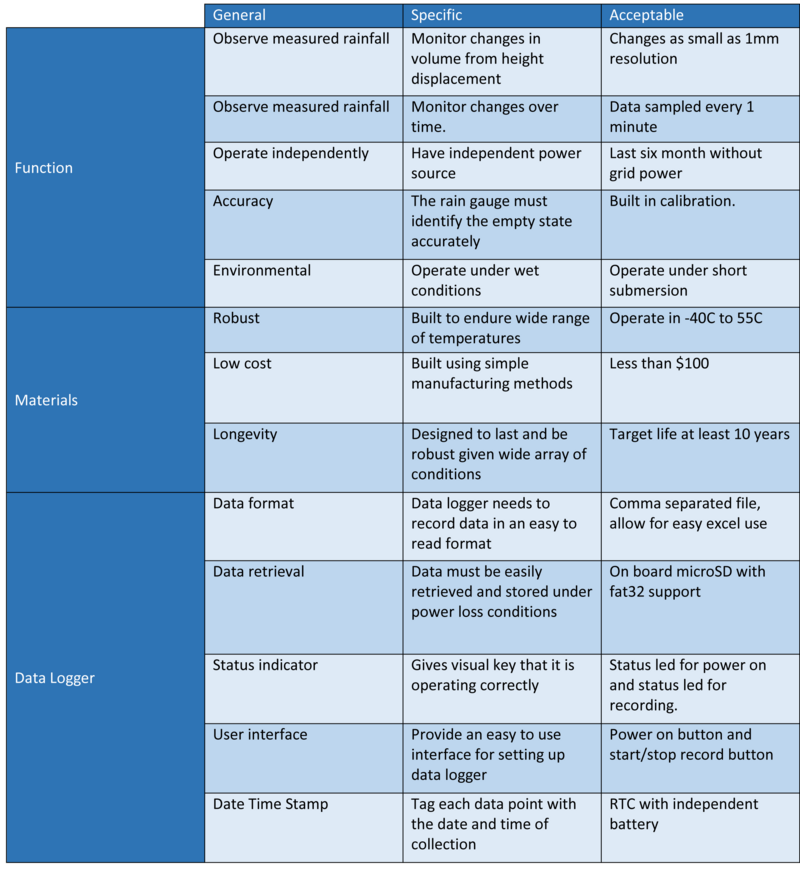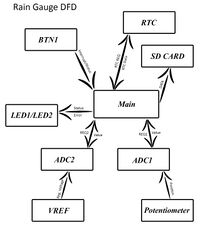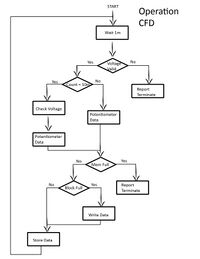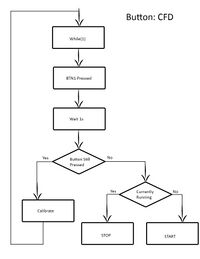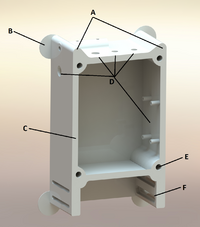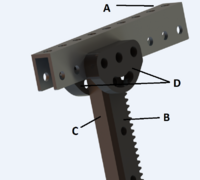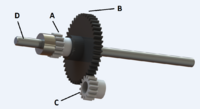Rain Gauge Retrofit
| Team Rain Men | |
| Sponsors | USDA Forestry Service. Main contact: Pete Robichaud, probichaud@fs.fed.us |
| Team Name | Rain Men |
| Duration | Fall - Spring 2014/2015 |
| Faculty Advisors | |
| Mentor |
|
| Team Members |
|
Current rain gauges store data in physical form, requiring an individual to laboriously convert data to electronic form so that it can be stored and analyzed by a computer. The rain gauge retrofit entails modifying current rain gauges throughout the northwest to store data in electronic form from the start, saving time and money for the US forest service.
Problem Definition
Background
Why make a conversion for rain gauges?
- Currently, each rain gauge requires an individual to laboriously convert data on a piece of paper to data in programs such as excel. There are many of these gauges throughout the world, and most still rely on the older designs utilizing paper rolls. Converting the initial data collection to electronic form could save on quite a bit of man-hours, allowing the forest service to use those man-hours elsewhere.
Current methods
- There are many small variations in design, but they all work on one basic premise: physical movement of an actuator arm, combined with an internal tension spring. Calibration is relatively simple: the recording paper is marked to give reference numbers regarding rainfall in fractions of an inch, and the system is balanced using various sets of weights until the actuator arm accurately reflects real rainfall amount.
Specifications
Deliverables
Working Retrofitted Rain Gauge
Development to date:
- Transferring Displacement to Potentiometer
- We have completed our final prototype of this system, found below in Project Learning
- Potentiometer
- We have bought, tested, and verified that our current potentiometer meets all specifications required by our project. Details can be found in Project Learning.
- Data Logger
- We have a datalogger that meets all our specifications, and is already configured with arduino software to give us real-time data on voltage and rainfall levels
- Energy Storage
- Preliminary analysis on energy needs has already been performed; batteries and support equipment have been acquired. Details can be found in the Project Learning section.
- Electrical Component Housing Unit
- The housing unit is complete and has met our specifications. Details of this system can be found below, in Project Learning.
3D modeled rain gauge with retrofit
- In Project Learning we have the results of our 3D modeling, which clearly shows that plenty of room exists within current rain gauges for our retrofit design.
Operation diagrams
- Both CFD and DFD diagrams are finished and can be seen in Project Learning.
- Wiring Diagram
Potentiometer & data logger calibrations
- Calibration is performed using a switch located on the housing unit, and is done on-site.
User Manual
- The user manual is currently composed of electrical and mechanical portions.
- Electrical Engineering Manual
- Mechanical Engineering Manual
Project Learning
Electrical Engineering
- Noise Analysis
- Noise analysis was performed on multiple potentiometers to determine viability.
- Analysis and Report
- Noise analysis was performed on multiple potentiometers to determine viability.
- Validating Rotary Potentiometer
- Having selected the rotary potentiometer to move forward with design we needed to validate its range of operation and maximize the useable range.
- Analysis and Report
- Having selected the rotary potentiometer to move forward with design we needed to validate its range of operation and maximize the useable range.
- Power Analysis
- In order to select a usable power system the current of the system must be measured and minimized. Experiments were performed and future experiments are planned.
- Analysis and Report
- In order to select a usable power system the current of the system must be measured and minimized. Experiments were performed and future experiments are planned.
- Operation/Control Diagrams
Mechanical Engineering
- Housing Unit Development
- Bracket and Gasket Development
| Table 1: Design Features | |||||
|---|---|---|---|---|---|
| Housing Unit Features A) These soft curves are added throughout the box to distribute internal stresses more evenly, preventing the abs print from splitting. B) 'mouse ears' are added to prevent the corners from curling while the 3D print is in progress C) a flat surface for application of foam neoprene, to ensure a watertight seal. D) Various mounting points for: a datalogger, on/off switch, calibration button, temperature sensor, and potentiometer E) .25 inch holes are to provide room for aluminum thread inserts, which are installed by melting the surrounding plastic F) Mounting channels on the bottom give a solid support structure, with hexagonal slots gripping locknuts so only one tool is needed for mounting the project box to the rain gauge. |
|||||
| L-Arm Assembly Features A) This is the point of contact between the assembly and the existing rain gauge. B) The gear rack, which interfaces with the gearbox assembly C) Aluminum beam, used to stiffen the geartrain D) Custom brackets designed to keep the gear rack oriented in a vertical position | |||||
| Geartrain Features A) The pinion that rotates from the L-arm Assemblie’s Gear rack B) The spur gear that rotates with gear A C) The final pinion gear, directly connected with our rotary potentiometer. This is near the heart of the change from mechanical to electrical systems. D) The gearbox shaft, designed to be immobile. Note that there is a sleeve bushing underneath gear A and B. | |||||
| Full Assembly Features To the left is the Mockup of our full conversion sitting at the base of the original rain gauge enclosure. | |||||
- Choosing the right box
- After modifying a variety of off the shelf project boxes it was found 3D printing to be the best option. A cost analysis was performed to validate the printer purchase and printer selection.
- Cost analyis/ Final printer
Team Information
| Nick Kirby | Interests: Solid modeling, statistical analysis, mechanics of materials
Life Goals: government work through the EPA or USDA | |
| Mechanical Engineering Student | ||
| Hometown: Meridian, Idaho | ||
| Email: kirb5074@vandals.uidaho.edu | ||
| Mike Kaminski | I'm a senior studying Electrical Engineering focusing on microelectronic fabrication and design. I've completed an internship with Micron working in their system compatibility group helping develop DRAM test procedures. After graduation I'm pursuing a job in the field of microelectronics. | |
| Electrical Engineering Student | ||
| Hometown: Coeur d'Alene, Idaho | ||
| Email: skaminski@vandals.uidaho.edu | ||
| Alec Harrison | Interests: Using natural restoration techniques to help improve fish habitat, especially in highly eroded areas.
| |
| Biological Systems Engineering Student | ||
| Hometown: Boise, Idaho | ||
| Email: harr7706@vandals.uidaho.edu | ||
| Peter Frankenfield | Interests: Fatigue Fracture Analysis, Solid Modeling, Mechanics
| |
| Mechanical Engineering Student | ||
| Hometown: Spokane, Washington | ||
| Email: fran7684@vandals.uidaho.edu |
Document Archive
Rain Gauge Contract
Rain Gauge Design Review Slides
Rain Gauge Action Items
